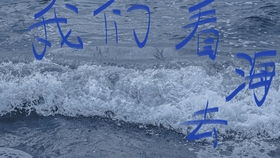Content:
Introduction: Carp fishing, often regarded as one of the most challenging and rewarding forms of angling, requires a blend of skill, patience, and understanding of the fish's behavior. Whether you are a seasoned angler or a beginner looking to hone your skills, this article will provide you with a comprehensive guide to carp fishing techniques, complete with detailed diagrams to help you visualize and understand each step. From selecting the right equipment to mastering the art of presenting your bait, we'll cover it all.

Understanding Carp Behavior: Before you can effectively catch carp, it's crucial to understand their behavior. Carp are bottom feeders and are attracted to areas with abundant food sources. They are also known for their strong swimming abilities and can be quite elusive. By understanding their habits, you can increase your chances of a successful catch.
Selecting the Right Equipment: The equipment you choose can significantly impact your fishing experience. Here's a breakdown of the essential gear for carp fishing:
a. Rod and Reel: A heavy-duty carp rod and reel combination is recommended. Look for rods with a fast action and a reel capable of handling heavy line.
b. Line: Use a strong, abrasion-resistant line such as braid or fluorocarbon. Carp can be quite strong, so a line with a minimum breaking strain of 10-15lb is advisable.
c. Hooks: Choose large, strong hooks suitable for the size of the bait you plan to use. A size 6-10 hook is typically recommended for carp.
d. Bait: Carp are omnivorous and will eat a variety of baits. Live bait, such as worms or maggots, is often effective, but prepared baits like boilies and pellets can also be successful.
Setting Up Your Fishing Spot: To find the best spot for carp fishing, look for areas with a lot of vegetation, reeds, or submerged structures. These areas provide cover and are often frequented by carp. Once you've found a promising spot, follow these steps to set up:
a. Cast your line into the water and let it sink to the bottom.
b. Attach your bait to the hook and position it in an area with a lot of vegetation or cover.
c. Adjust your rod position to keep it in line with the bait and to allow for easy retrieval.
Carp Fishing Techniques: Here are some key techniques to help you catch carp:
a. Patience: Carp can be slow to bite, so patience is key. Wait for a few minutes before reeling in your line to allow the bait to settle.
b. Sensitivity: Carp are sensitive fish, and even the smallest movements can spook them. Keep your movements slow and gentle.
c. Presenting the Bait: There are several ways to present your bait to carp. You can fish it on the bottom, allow it to swim naturally, or even use a method called "slop" where you present the bait in a disorganized manner to mimic natural food sources.
Diagrams for Visual Learning: To help you better understand the techniques mentioned above, we've included diagrams that illustrate the following:
a. Rod and Reel Setup: A diagram showing how to properly attach your rod to the reel and how to spool your line.
b. Bait Presentation: Diagrams demonstrating different ways to present your bait to carp, including bottom fishing, free-lining, and slop fishing.
c. Hooking Techniques: An illustration of how to properly hook your bait to ensure it remains secure and looks natural to the carp.
Conclusion: Carp fishing is an art that requires practice and patience. By understanding the behavior of carp, selecting the right equipment, and mastering the techniques of bait presentation, you can increase your chances of a successful catch. Remember to always respect the fish and the environment, and enjoy the tranquility and challenge that carp fishing offers. With this comprehensive guide and the included diagrams, you're well on your way to becoming a skilled carp angler. Happy fishing!












